Nvidia Shield Tablet review
A powerful Android tablet with the latest technology at a surprisingly low price
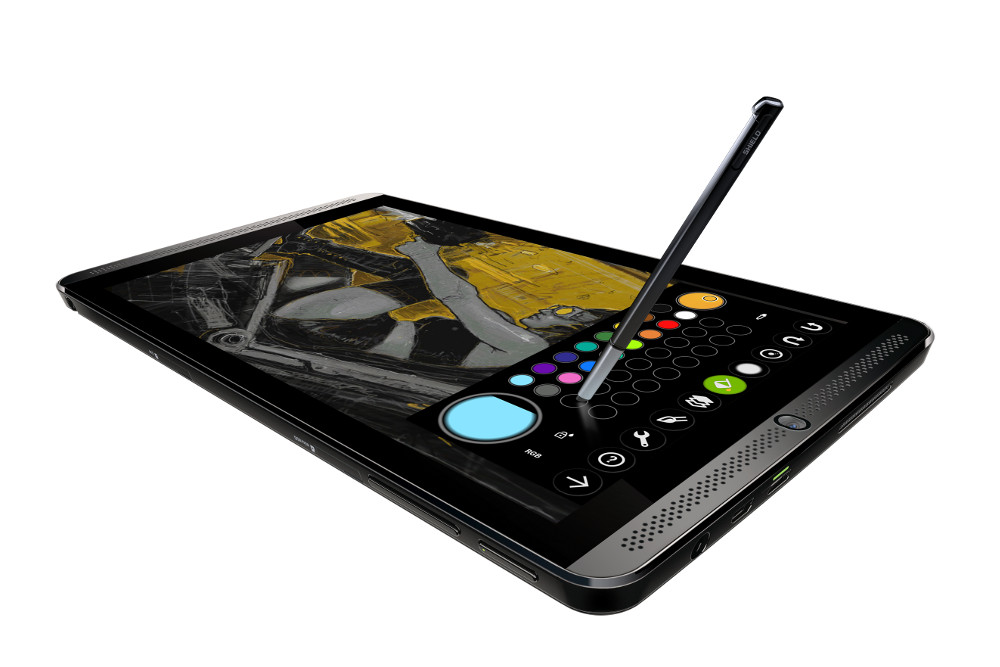

Despite its flaws, this fast, quality tablet is great value whether you’re into gaming or not
-
+
Top-notch internal hardware; Good price
-
-
Somewhat uncomfortable design; Many largely unneccessary features
Nvidia is a company best known for its graphics cards, built into many PCs and laptops. It therefore seems odd that Nvidia also makes the Shield, an 8in Android tablet, until you realise it's a showcase for the company's various technologies. Although most of these are aimed at gamers, the Shield still has plenty to offer even if you have no interest in games - starting with its low price of just 200 ex VAT for the 16GB WiFi-only model. A 32GB 4G variant is available for just 60 more.
Nvidia Shield Tablet: build quality and performance
The Shield may have an unusual name, but its black plastic casing looks plain. Although it's not as rigid as the metal casing of the iPad Mini 2, it's still sturdy. The thin borders on either side of the screen (when held in portrait orientation) make it tricky to get a firm grip on the tablet without accidentally touching an onscreen control, while the edges tended to dig into our skin.
Its weight of 350g is about average for an 8in tablet, although the weight could be more evenly distributed to make it more comfortable to hold for long periods of time. We also wish the mushy-feeling power and volume buttons gave more feedback when pressed.
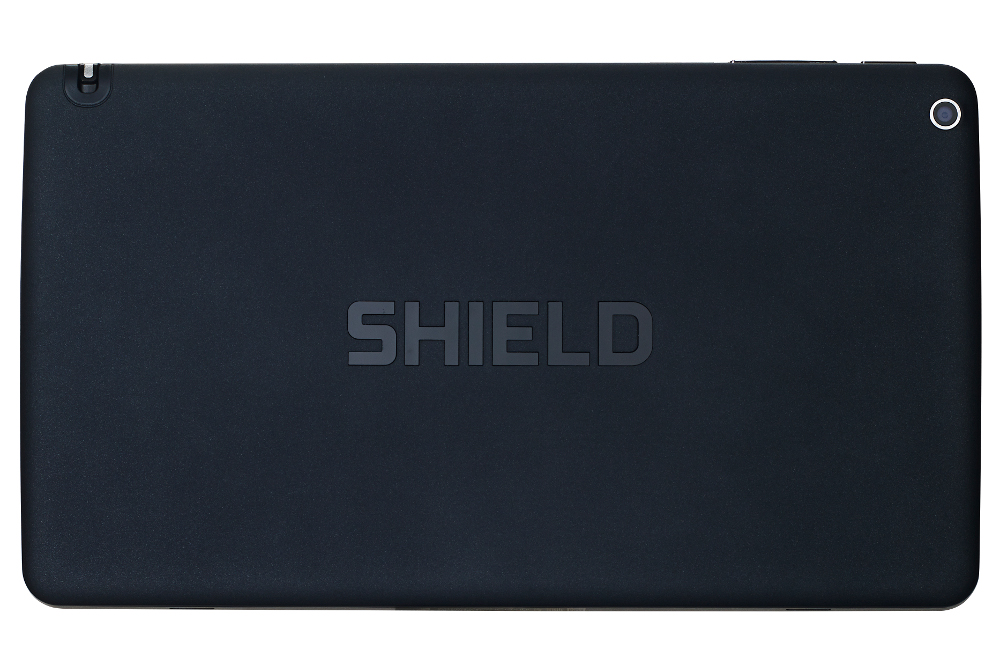
While the Shield is lacking in ergonomics, it's not short on performance as it comes equipped with Nvidia's own Tegra K1 processor. Although it shares the same name as the dual core 64-bit processor in Google's Nexus 9 tablet, it's actually a little different - it's a quad core 32-bit variant.
Although it won't be able to run 64-bit apps in the future, 32-bit apps will be available for a long time to come and for now there's little practical difference. It performed very similarly to its 64-bit counterpart, blitzing through our demanding benchmarks and is one of the fastest tablets we've seen.
Nvidia Shield Tablet: display, responsiveness and battery life
The 8in screen is dazzlingly bright and it has a resolution of 1920x1080 pixels so text looks sharp. Colour accuracy and contrast aren't quite as good compared to other tablet screens, but it's still very good.
We were initially confounded by the incredibly laggy responsiveness of its touchscreen. Disabling Nvidia's ultra power-saving mode increased the touchscreen's responsiveness immensely, although it has an annoying habit of turning itself back on. It's baffling that this power-saving mode is turned on by default and you'd have to be very desperate for extra battery life to tolerate the dreadful lag that it imposes.
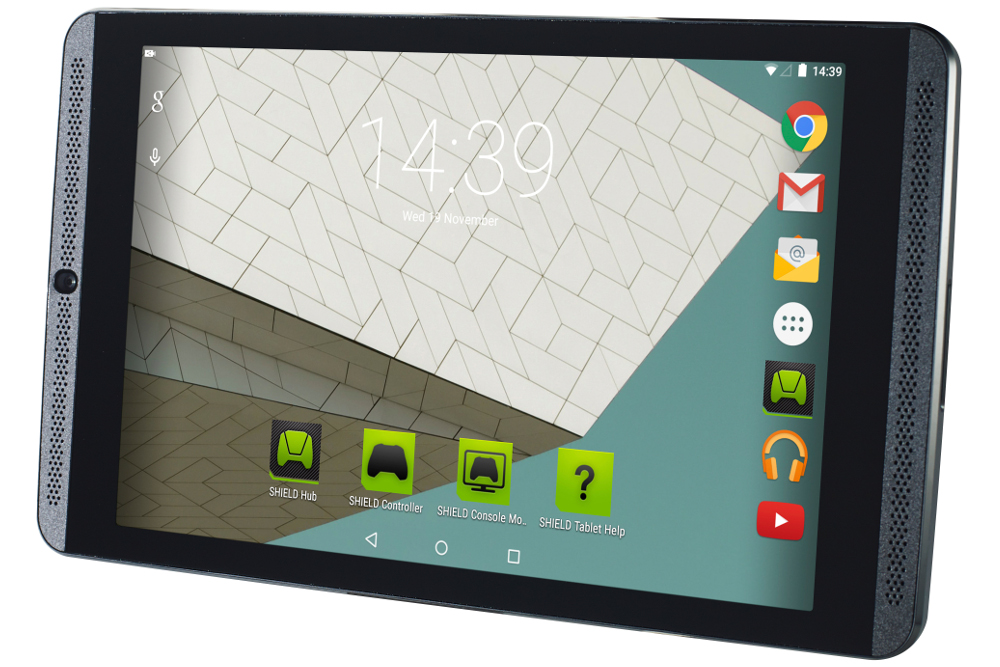
With this mode off, there was still a slight delay between swiping the screen and it responding that isn't present on more expensive Android mini tablets such as the Sony Xperia Z3 Tablet Compact. It's bearable though and less irritating than the more pronounced lag on many cheaper tablets.
In any case, there's little need to use Nvidia's power-saving mode. The battery lasted just over ten and a half hours when playing videos continuously, a score that's in line with what we'd expect from an 8in tablet.
Nvidia Shield Tablet: software
The Shield is the first Android device we've seen besides the Nexus 9 to come with 5.0 Lollipop, the latest version of Android, pre-installed - an impressive feat. Besides the annoying ultra power-saving mode, Nvidia has only lightly modified the Lollipop interface. If you don't need Nvidia's extra features then they can be easily ignored, but some of them can be useful.
For example, you can record what's happening on-screen, either with or without commentary. The recording is saved like any other video file which you can then share. This could be used, for example, to create tutorials for your less technically-knowledgeable friends and co-workers on how to use Android or particularly complex apps.
As with Samsung's Galaxy Note range of tablets, a stylus is included with the Shield. Slide it out of its nook and a small window automatically appears on screen for launching Nvidia's pre-installed note-taking and painting apps. The note-taking app is very basic, while the painting app can be confusing to use with its cryptic, unlabelled icons. The painting app is surprisingly versatile though with a variety of canvases and brushes available.
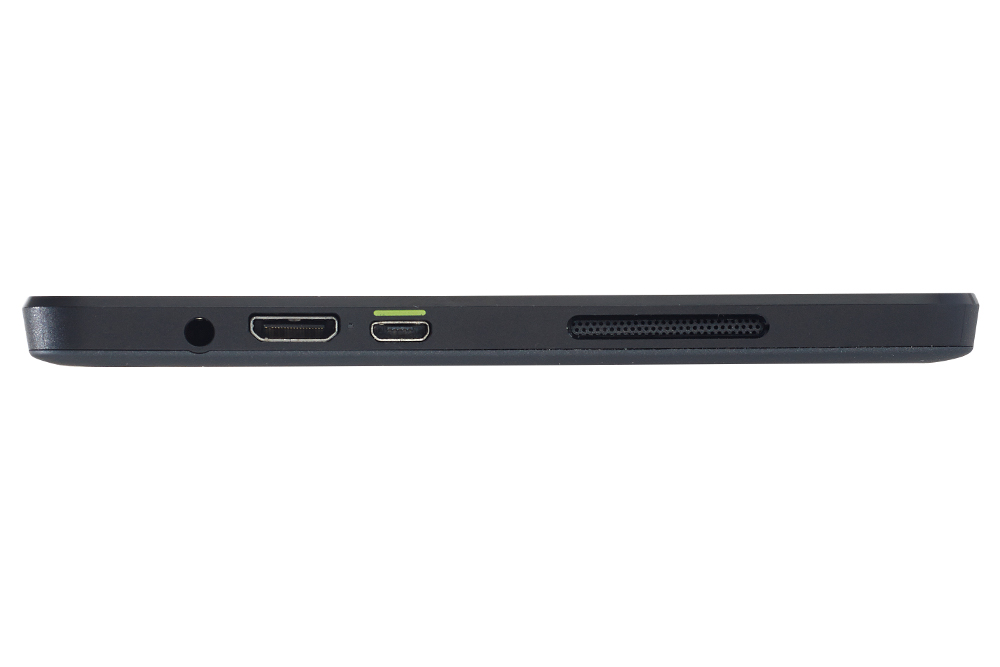
Impressively, the touchscreen is smart enough to ignore your palm resting upon it when you're writing or drawing with the stylus. This is a feature we've only otherwise seen in the much more expensive Microsoft Surface Pro 3. Plus, the stylus is pressure sensitive so pressing down harder on the screen makes a thicker or darker mark in the painting app, depending on what tool you're doing.
We did encounter an odd and infuriating bug that didn't affect the Nexus 9 or any of our Android 4.4 KitKat devices. All user accounts other than the master can't access external storage, either micro SD cards or USB sticks connected using a USB On The Go adapter.
Nvidia Shield Tablet: games
You can use the tablet to play your PC games as long as both the Shield and your PC are connected to a dual-band 802.11n wireless network at 5GHz. The PC streams the graphics and sound to the Shield, which in turn sends your control decisions back to the PC.
This worked surprisingly well in practice, although the occasional lag in sending your control decisions back to the PC meant that we sometimes lost in fast-paced games. Oddly the Shield doesn't support 802.11ac - its extra speed would've really helped here.
Disappointingly, another person can't use the PC to, for example, do some office work while you game on the Shield, reducing the usefulness of this feature. Plus, your PC or laptop will need to have a specific Nvidia GeForce graphics card for this feature to work.
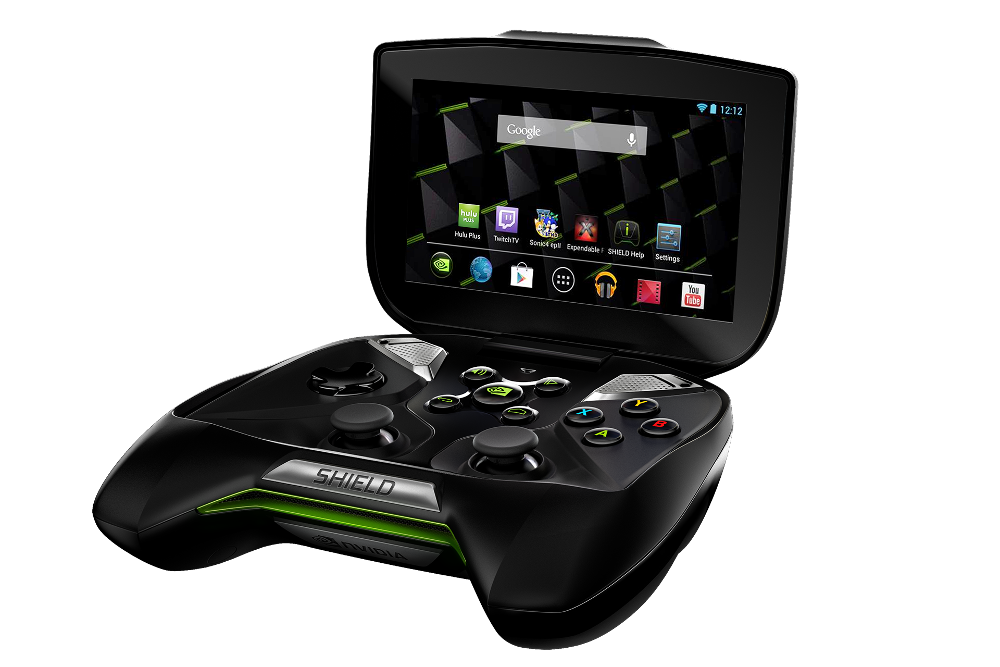
Less successful was the Grid feature. This allows you to play a small selection of popular PC games on the Shield without a PC at all - the graphics are instead streamed from Nvidia's servers over the internet.
This not only requires a 5GHz 802.11n network, but a very fast broadband connection with low latency too. A 10Mbps residential ADSL connection didn't cut it - we had to use a colleague's 50Mbps cable connection and even then we had to stay in the same room as the router, further reducing the usefulness of the Grid feature.
If you're not put off by these limitations, then you'll want to invest in some accessories for the best gaming experience. A controller that connects via WiFi costs an extra 50 while an iPad-style screen cover that doubles as a stand costs an extra 25. The cover isn't particularly well-designed though - its chunky hinge makes the tablet even more uncomfortable to hold.
Nvidia Shield Tablet: conclusions
Gaming features aside, the Nvidia Shield has a few annoying design quirks which stop it from getting our Editor's Choice award and an unconditional recommendation. It's still a good tablet though, neatly filling the hole left by the now discontinued Nexus 7 - a powerful, generously equipped Android mini tablet at a very reasonable price.
Verdict
Despite its flaws, this fast, quality tablet is great value whether you’re into gaming or not
OS: Android 5.0
Display: 8in 1920 x 1200
CPU: 2.2GHz Nvidia Tegra K1 quad-core processor
GPU: Nvidia Kepler graphics chip
RAM: 2GB
Storage: 16GB
Dimensions: (WxHxD) 126 x 221 x 9mm
Weight: 350g
Get the ITPro daily newsletter
Sign up today and you will receive a free copy of our Future Focus 2025 report - the leading guidance on AI, cybersecurity and other IT challenges as per 700+ senior executives
-
 ‘Phishing kits are a force multiplier': Cheap cyber crime kits can be bought on the dark web for less than $25 – and experts warn it’s lowering the barrier of entry for amateur hackers
‘Phishing kits are a force multiplier': Cheap cyber crime kits can be bought on the dark web for less than $25 – and experts warn it’s lowering the barrier of entry for amateur hackersNews Research from NordVPN shows phishing kits are now widely available on the dark web and via messaging apps like Telegram, and are often selling for less than $25.
By Emma Woollacott Published
-
 Redis unveils new tools for developers working on AI applications
Redis unveils new tools for developers working on AI applicationsNews Redis has announced new tools aimed at making it easier for AI developers to build applications and optimize large language model (LLM) outputs.
By Ross Kelly Published
-
 Google layoffs continue with "hundreds" cut from Chrome, Android, and Pixel teams
Google layoffs continue with "hundreds" cut from Chrome, Android, and Pixel teamsNews The tech giant's efficiency drive enters a third year with devices teams the latest target
By Bobby Hellard Published